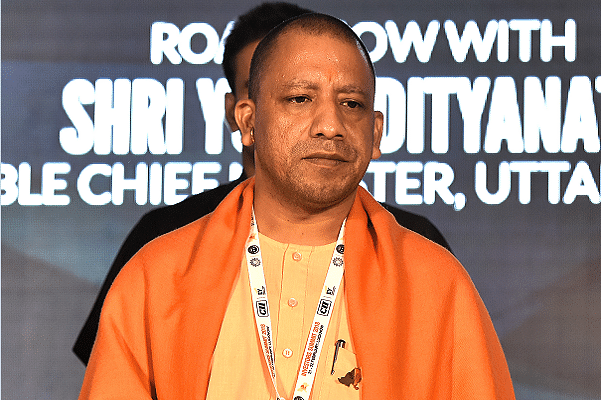News Brief
Uttar Pradesh: Yogi Adityanath Cabinet Approves Acquisition Of 1,365 Hectare Land For Second Phase Of Upcoming Jewar Airport

Uttar Pradesh Chief Minister Yogi Adityanath (Anshuman Poyrekar/Hindustan Times via Getty Images)
The Uttar Pradesh cabinet led by Chief Minister Yogi Adityanath on Tuesday (16 March) approved acquisition of another 1,365 hectare land in Jewar for the second phase of the upcoming Noida International Airport.
The cabinet also consented for an expenditure of Rs 2,890 crore for the land acquisition, besides resettlement and rehabilitation of the people who will be affected by the expansion of the greenfield airport project, reports Moneycontrol.
“The State Cabinet has today approved the proposal to acquire another 1,365 hectares of land for the future expansion of Noida International Airport at Jewar," S P Goyal, the additional chief secretary to Chief Minister Yogi Adityanath, tweeted.
The Jewar airport project was approved by Yogi Adityanath government in December 2017 and the concessionaire agreement between Yamuna International Airport Private Limited, the Special Purpose Vehicle (SPV) set up by Zurich international AG and Noida international airport was signed in October, 2020.
Rs 29,650 crore airport will be developed, operated and maintained by the European company under a 40-year concession. The company plans to invest Rs 4,663 for this purpose in the first phase of the Jewar Airport project.
The first phase of the project has to be completed by 2023. However, the timeline, formulated before the Covid-19 pandemic struck, may see some changes.
When the first phase becomes operational, the Jewar International Airport will handle around 12 million passengers every year.
The project will be spread over an area of 5,000 hectares and may have six to eight runways.
Support Swarajya's 50 Ground Reports Project & Sponsor A Story
Every general election Swarajya does a 50 ground reports project.
Aimed only at serious readers and those who appreciate the nuances of political undercurrents, the project provides a sense of India's electoral landscape. As you know, these reports are produced after considerable investment of travel, time and effort on the ground.
This time too we've kicked off the project in style and have covered over 30 constituencies already. If you're someone who appreciates such work and have enjoyed our coverage please consider sponsoring a ground report for just Rs 2999 to Rs 19,999 - it goes a long way in helping us produce more quality reportage.
You can also back this project by becoming a subscriber for as little as Rs 999 - so do click on this links and choose a plan that suits you and back us.
Click below to contribute.
Latest